Neuro 2.2 - telencephalon
1/64
There's no tags or description
Looks like no tags are added yet.
Name | Mastery | Learn | Test | Matching | Spaced |
|---|
No study sessions yet.
65 Terms
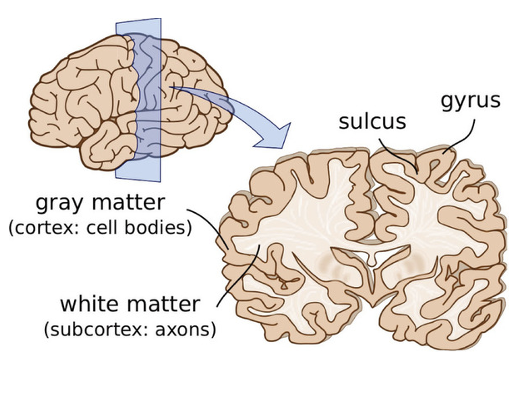
telencephalon
______________ is the two large hemispheres separared by the longitudinal fissure
neocortex - 6 layers
paleocortex - 3-5 layers
archicortex - max of 3 layers
what are the 3 major divisions of the cerebral cortex? order them from highest to lowest amount of layers (list the layers)
90
the neocortex covers about _____% of out cerebral cortex
paleocortex
the _____________ division of the cerebral cortex covers parts of the olfactory cortex: parahippocampal gyrus and uncus
archiocortex
the _______________ division of the cerebral cortex covers parts of the limbic cortex: hippocampal formation and dentate gyrus
pyramidal
_____________ cells are the primary efferent neuron of the cortex
Glutamate and aspartate; excitatory
what are the neurotransmitters of pyramidal cells? are they excitatory or inhibitory?
spiny cells (spiny stellate)
aspiny stellate cells (granule cells)
basket cells
what are the types of cortical interneurons/local circuit neurons
GABA; inhibitory
what is the main neurotransmitter of cortical interneurons/local circuit neurons? is it excitatory or inhibitory?

molecular
external granular
external pyramidal
internal granular
internal pyramidal
multiform
lamellar organization of the neocortex/homotypical, most superficial to deep
few
does the molecular layer of the neocortex have a lot or a few cell bodies
molecular (I)
which layer in the neocortex is a meshwork of axons and dendrites
molecular (I)
which layer in the neocortex is closest to the pia
external granular and pyramidal (II and III)
which layer in the neocortex has calls that are predominately in cortical circuits (corticocortical projections)
internal granular (IV)
which layer in the neocortex is the primary receptive layer
spiny and aspiny
what kind of cells are in the external granular layer of the neocortex
internal granular (IV)
which layer in the neocortex do most thalamocortical fibers terminate
internal granular (IV)
which layer in the neocortex is the outer line of Baillarger
medium and large pyramidal cells
what kind of cells does the internal pyramidal layer in the neocortex have
internal pyramidal (V - because of its abundant pyramidal cells)
which layer in the neocortex is the principle efferent layer from the cerebral cortex
fewer
does the internal pyramidal layer have more or fewer axons going to the thalamus compared to the multiform layer
multiform (VI)
which layer in the neocortex is primarily corticothalamic projections
pyramidal
what kind of cells does the multiform layer in the neocortex have
corticocortical (from one gyrus to another, commissural or association)
thalamocortical (specific, going to layer IV - internal granular - primary receptive layer)
two types of afferent information going to cortex
multiform (VI)
efferent info from internal pyramidal (V) or multiform (VI):
going mostly to thalamus
multiform (VI - cortex to thalamus)
efferent info from internal pyramidal (V) or multiform (VI):
corticothalamic
internal pyramidal (V)
efferent info from internal pyramidal (V) or multiform (VI):
going mostly to brain stem, spinal cord, and basal nuclei
external granular and pyramidal (II and III)
which layers are sending efferent information to other cortical regions
homotypical (all 6 layers clearly definable and roughly equal)
homotypical or heterotypical
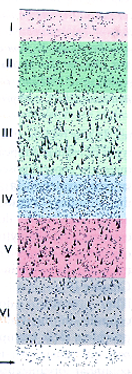
agranular heterotypical (motor - layer V well developed and IV is indistinct)
homotypical or heterotypical
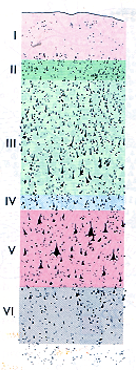
granular heterotypical (sensory - layer IV is well developed and V is indistinct)
homotypical or heterotypical
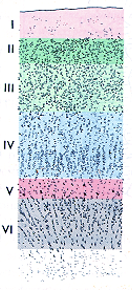
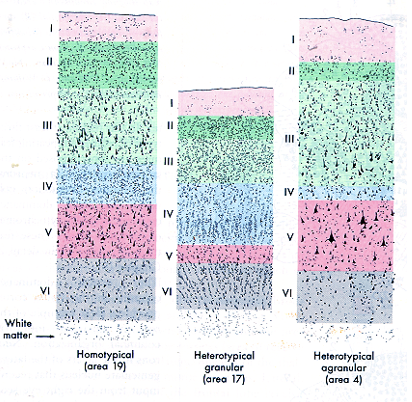
granular
a ____________ heterotypical cortex has terminations of sensory specific thalamic nuclei
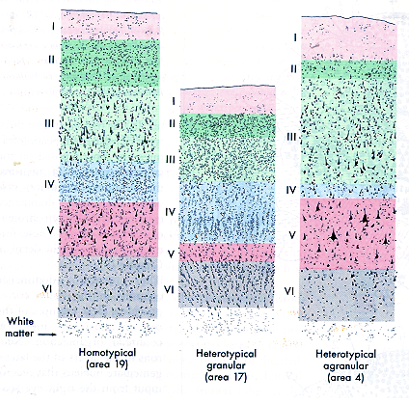
agranular
a ____________ heterotypical cortex typically deals with motor related functions
ventral anterior/ventral lateral
where do efferents from the cerebellum go to in the thalamus
post
glutamate is excitatory for post or pre synaptic cells
neurotransmitter
neurotransmitter or neuromodulator:
axon to dendrite
neuromodulator
neurotransmitter or neuromodulator:
more diffuse, longer lasting effect
thalamus and subcortex
what 2 areas is the cerebral cortex receiving afferent information from?
excitability of cortical neurons
general arousal state
attention/readiness to attend to stimuli (focus on signal and not the noise)
alter motivational state
neural plasticity
what are the 5 general functions of the neuromodulatory system
neuropsychiatric disorders:
Mood disorders – depression, mania
Anxiety disorders
Schizophrenia
Attention disorders
Alzheimer’s disease
Cognitive aspects of Parkinson’s disease
list some examples of disorders caused by dysfunction/imbalance implicated in neuromodulatory systems
cholinergic (Ach)
______________ is an example of a neuromodulator that causes extra thalamic input to the cortex, a lack of this is implicated in alzheimers disease
noradrenergic
serotonergic
dopaminergic
histaminergic
what are the neuromodulatory systems
noradrenergic
the _____________ neuromodulatory system is where the locus ceruleus responds to changes in sensory input, ex. enhance signal to noise ratio
noradrenergic and serotonergic (5-HT)
serotonergic (5-HT)
which two neuromodulatory systems combined can produced depression, anxiety, aggressive behavior, eating disorders, obsessive compulsive disorder
of those two, which one can cause these conditions alone (not combined)
serotonergic (5-HT)
the _____________ neuromodulatory system is from the raphe nucleus of pons and midbrain, can enhance or suppress neuronal activity
dopaminergic
the _____________ neuromodulatory system is from the ventral tegmentum of midbrain and substantia nigra, pars compacta; dysfunction of this system is implicated in hallucinations of schizophrenia, cognitive dysfunction of parkinson’s disease, alzheimers disease
histaminergic
the _____________ neuromodulatory system is produced by the hypothalamus and plays a role in wakefulness and inhibition associated with sleep
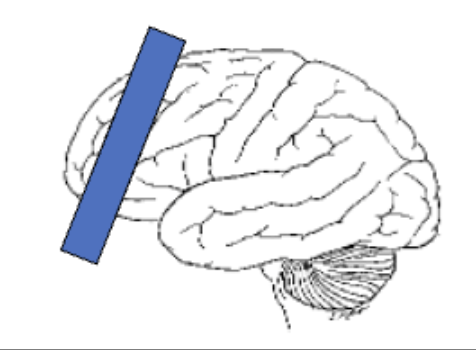
frontal lobe and premotor cortex
what parts of the brain are affected by a prefrontal lesion
agnosia (lesion of sensory association cortex, ex. put hand in pocket and know if it’s keys or coins)
____________ is the inability to recognize or interpret familiar objects, people, sounds, smells, or tastes despite having intact sensory functions

restraint (judgement, foresight, concentration, delay gratification)
initiative (curiosity, motivation, drive, creativity, personality)
order (abstract reasoning, working memory, planning, insight, organization)
3 functions of the prefrontal
prefrontal
the ____________ region of the brain is important for learning new material, selective attention, and integration of information in decision making
disconnection syndromes
_________________ is dysfunction caused by damage to association or commissural pathways; for example, a lesion to the corpus callosum
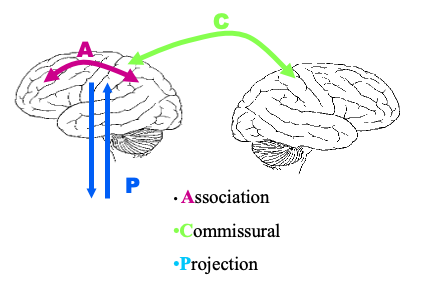
association
commissural
projection
(ACP)
what are the three fiber pathways in the medullary center

short association fibers
the ____________________ cerebral fiber pathway connects neighboring gyri

arcuate fasiculus
the ____________________ cerebral fiber pathway connects frontal-parietal-temporal
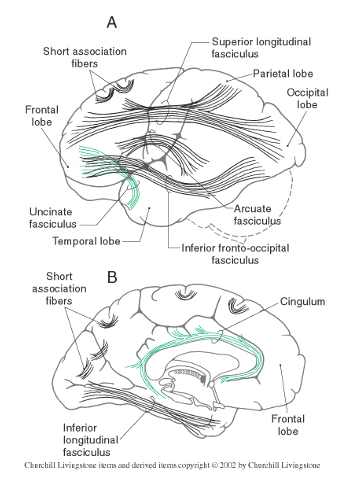
cingulum
the ____________________ cerebral fiber pathway has connections withing the parahippocampal gyrus
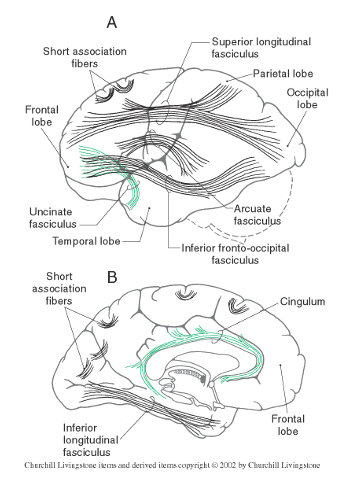
uncinate fasiculus
the ____________________ cerebral fiber pathway connects temporal to frontal
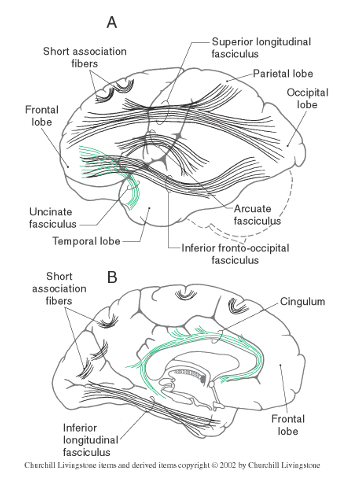
superior longitudinal fasciculus
the ____________________ cerebral fiber pathway connects frontal-parietal-occipital
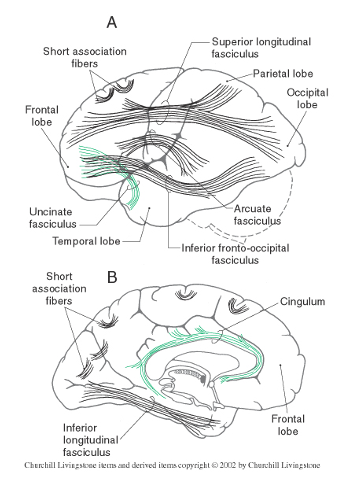
inferior fronto-occiptial (passes through temporal lobe)
the ____________________ cerebral fiber pathway connects frontal occipital
superior longitudinal fasciculus
which cerebral fiber pathway
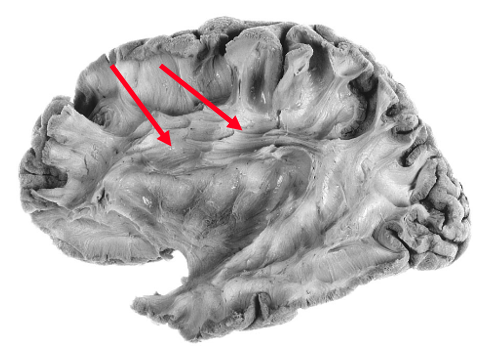
uncinate fasciculus
which cerebral fiber pathway
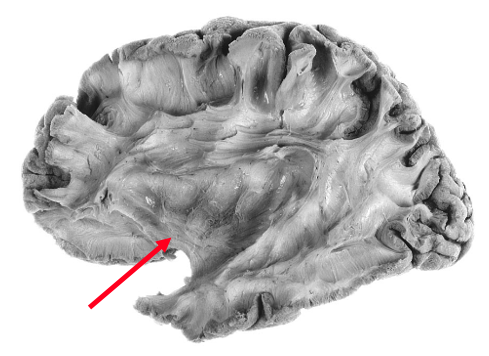
anterior commissure
the ____________________ cerebral fiber pathway connects temporal to temporal
corona radiata
the _______________ projection fibers are between the cortex and internal capsule
internal capsule
the _______________ projection fibers project from the cortex to subcortical structures
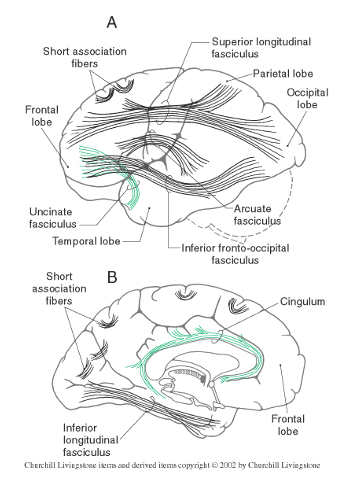
Cingulum
Sup. Longitudinal fasciculus
Uncinate fasciculus
Inf. Fronto-occipital fasciculus
Arcuate fasciculus
what are the 5 long association fiber pathways